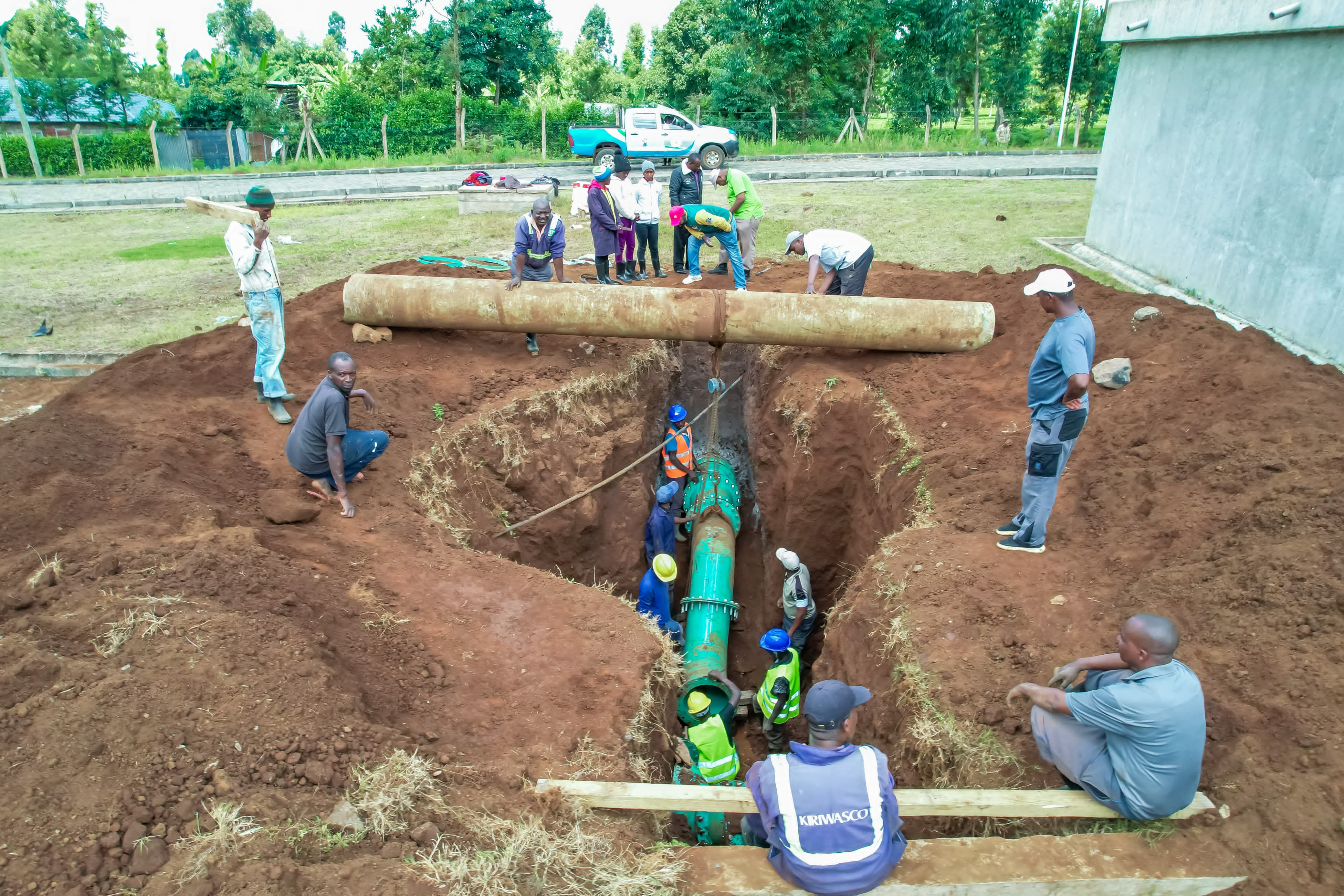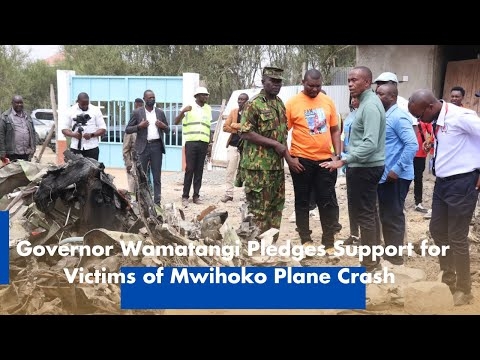

The County Government of Kirinyaga has intensified its efforts to reduce non-revenue water by installing a master meter at the Muratiri Water Treatment Plant.
The meter will allow the Kirinyaga County Water and Sanitation Company to monitor water production more accurately and compare it with actual consumption, enabling the detection of losses caused by leaks, pipe bursts, overflows, or illegal connections.
Kicowasco, the only public water company in the county, is fighting to reduce non-revenue water that currently stands at 47 per cent. Non-revenue water refers to water that is unaccounted for in systems.
Governor Anne Waiguru said the installation is among several reforms aimed at ensuring sustainable water management.
"The company is currently implementing the non-revenue water reduction plan that has helped reduce non-revenue water from 59 per cent," Waiguru said, noting that the goal is to reduce it to below 35 per cent by next year.
CEC for Water, James Mutugi, said the master meter will ascertain the actual amount of the commodity flowing from the source and help in analysing the water spent and billed.
"This will help us analyse how much water is produced and how much is billed. The difference will tell us the volume of non-revenue water so we can address physical and commercial losses," Mutugi said.
He noted that physical losses are mostly caused by bursts in main lines, overflows and aging infrastructure, while commercial losses involve illegal connections, unmetered usage and poor monitoring.
Chief officer for Water and Irrigation, Peter Murimi, said the county previously relied on estimated figures to track water output from Muratiri Treatment Plant.
"In the past, we relied on engineers’ figures. Muratiri is estimated to produce 30,000 cubic metres per day but now with the master meter, we will know the exact amount of water produced so we can monitor physical and commercial losses more effectively," Murimi noted.
He said the county has begun metering all consumer connections to ensure every drop of water is accounted for as it works towards universal metering which will boost revenue collection and reduce wastage.
Already, new extensions have been done in underserved areas to improve water access.
The county has also installed 27 electromagnetic zonal meters and district metering area meters to monitor the flow in specific areas and compare usage after billing.
Kicowasco’s managing director Cyrus Mwangi hailed the reforms saying they will improve customer service and billing efficiency.
"We have increased our engagement with residents to encourage prompt bill payments. We are also responding faster to illegal connections and pipe bursts once detected," Mwangi said, committing to increased water supply, accurate billing and increased revenue.
Kicowasco is also rehabilitating water lines damaged during road construction with the company’s scheme manager in Sagana, Peter Mwenda, confirming that the process of reconnecting over 300 households affected in Lower Kiangwaci and Gacharu is ongoing.
He added that the company is extending new water lines to areas that have never had piped water before, a gesture that has been received with joy by beneficiaries.
Andrew Kaburu, a resident of Kiaga, said they previously fetched water from rivers Gatondo and Kiwe but with the extension of a water line to the village, over 100 families will access clean water.













